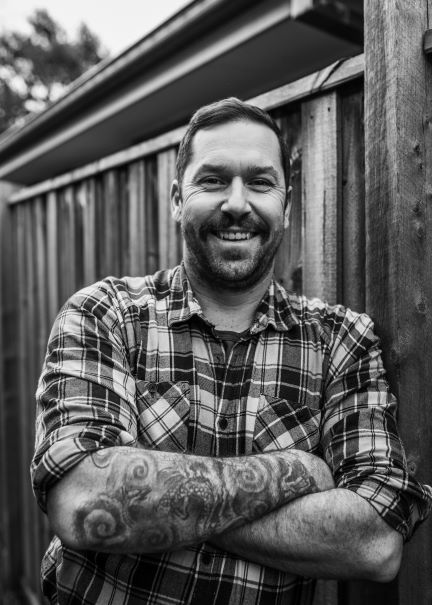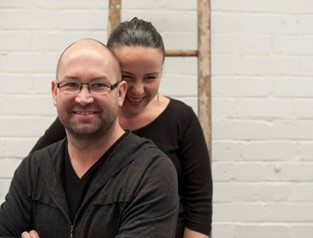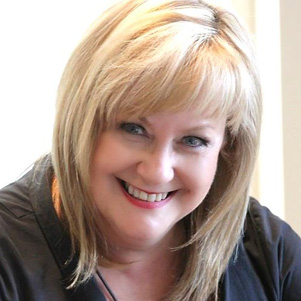Based in the North East of Melbourne, Timothy Blyton has been in the building and construction industry for approximately 20 years. His journey started as a high school student doing a pre-apprenticeship course in 2001, leading to a qualification as a Shopfitter and Joiner. A life-long learner and passionate about upskilling he has added to his name a Certificate IV in Kitchen and Bathroom Design and is 12 months off completing a mature aged apprenticeship in Carpentry.
Timothy is in the process of setting up his own company that will offer a design, construct and project management service, focussing on small and mid-sized interior design projects.
We recently caught up with Timothy and were inspired by his passion for design and his new business.
When did you first decide to become a designer and how did you get started in the industry?
It was during the pandemic but truthfully a few years before hand the seeds were sowed. I was about to walk away from the building industry altogether through frustration at the lack of opportunities to get off the tools and go into other areas such as design.
It’s a downside to the industry that formal upskilling is rarely offered within a company. In my case, I was project managing and running a workshop with no formal qualifications past my shopfitting qualification, just trying to make ends meet each day. That really took a toll on me and my family, so I gave myself 2 choices. Either walk away and find a new career, or, become the change I wanted to see. I went with the second choice as I know I have too much passion for building and just knew there was a whole other world past the worksite. After reaching out to DTA, I knew from the outset that I had made a good choice starting in design and truthfully, doing the course has given me a whole other perspective. From learning about design balance, keeping high standards no matter the project and striving to hone the craft of good design has really re-energised my passion for building.
What drew you to kitchen and bathroom design?
Whilst not specialising in design, the company I’m developing will have a strong focus on design but also the construction and project management aspect as well. I am offering a service that keeps as much as possible “in house” to create a more seamless experience for the client. Any projects I’ve worked on the past where I did the design, oversaw, or performed the build and generally was involved from start to finish, felt natural and fulfilling to me. For that reason, it made sense to me to play to my strengths and focus on this as a business model. The idea of the carpentry qualification is to extend my skillset and give the business a greater scope on the projects that can be taken on.
How do you stay up to date with current trends?
Truthfully, my wife! She is a photographer and has an excellent eye for detail and loves good interior design. We often have great conversations about current design trends, aesthetics, what looks good and more importantly, what doesn’t. My niche is about functionality, shape, flow and practicality whereas her strengths are about colour balance, contrast, lighting and aesthetic appeal. It’s great to have someone to bounce ideas from that is honest and on not scared to say if something simply isn’t appealing from a consumer point of view.
Do you have a signature style or favourite trend?
I really enjoy the design principals of Japanese and Scandi. I find these principals are very adaptive but also allow a space to breathe and flow. I’m definitely a subscriber to the less is more theory.
What is the most challenging part of your job?
At the moment, branding. I never knew how much there is to it and how important it is to get the word around about a company and be so on point with the messaging. And let’s face it, us tradies are not branding guru’s so getting this part of the company right is a challenge to say the least. In addition, finding the right clientele. In this current economic environment, I don’t think I can ever remember a time where knowing your company from top to bottom and being able to show that to the world was as important as it is now. Standing out in the crowd has become a minefield and even the best laid plans can be undone so easily if it doesn’t find the right audience.
Do you have a favourite project?
A project I worked on last year was for a high-end residential property in the Mornington Peninsula that was true architectural work. The main materials used were an American Walnut ¼ crown cut veneer and a George Feathers dyed veneer. The walnut had a running sequence with the grain that resembled the different parts of the growth rings from the tree that wrapped around the whole kitchen, Island, butler’s pantry, hallway and entries into the main living room. The dyed veneer was used through-out the bedrooms and bathrooms in a variety of 19mm and 25mm.There was extensive detail that took many hours to complete as there were no second chances. If a sheet was damaged or manufactured incorrectly, that was it. And there were about 60-70 sheets we had to work through in order! This was a huge challenge and really brought home the message pay attention to every detail no matter how big or small.
What keeps you inspired to be creative for your clients?
Even when I was a young apprentice, I always found that anything to do with the interior of a home such as a kitchen, was a big deal for the homeowner. Ask anyone about a dream home and it typically revolves around a dream kitchen and bathroom. Given that, I feel inspired to show up well researched, informed and involved in a project. I’ve never been a clock on/off kind of guy, so the moment I start doing that will be the day I close up shop because the inspiration has stopped.
Do you have any advice for anyone thinking about a career in kitchen and bathroom design?
Do some labouring or casual work to understand how things go together and work both in a workshop and onsite. This will add to the pool of knowledge, develop contacts, build relationships with other designers and trades, the list goes on. Through this experience, you will soon be able to start seeing how a project will turn out before even getting pen to paper as your building knowledge will start to co-exist with your design knowledge. Plus, have fun with it! It is a truly rewarding industry to be a part of with many great people involved.





